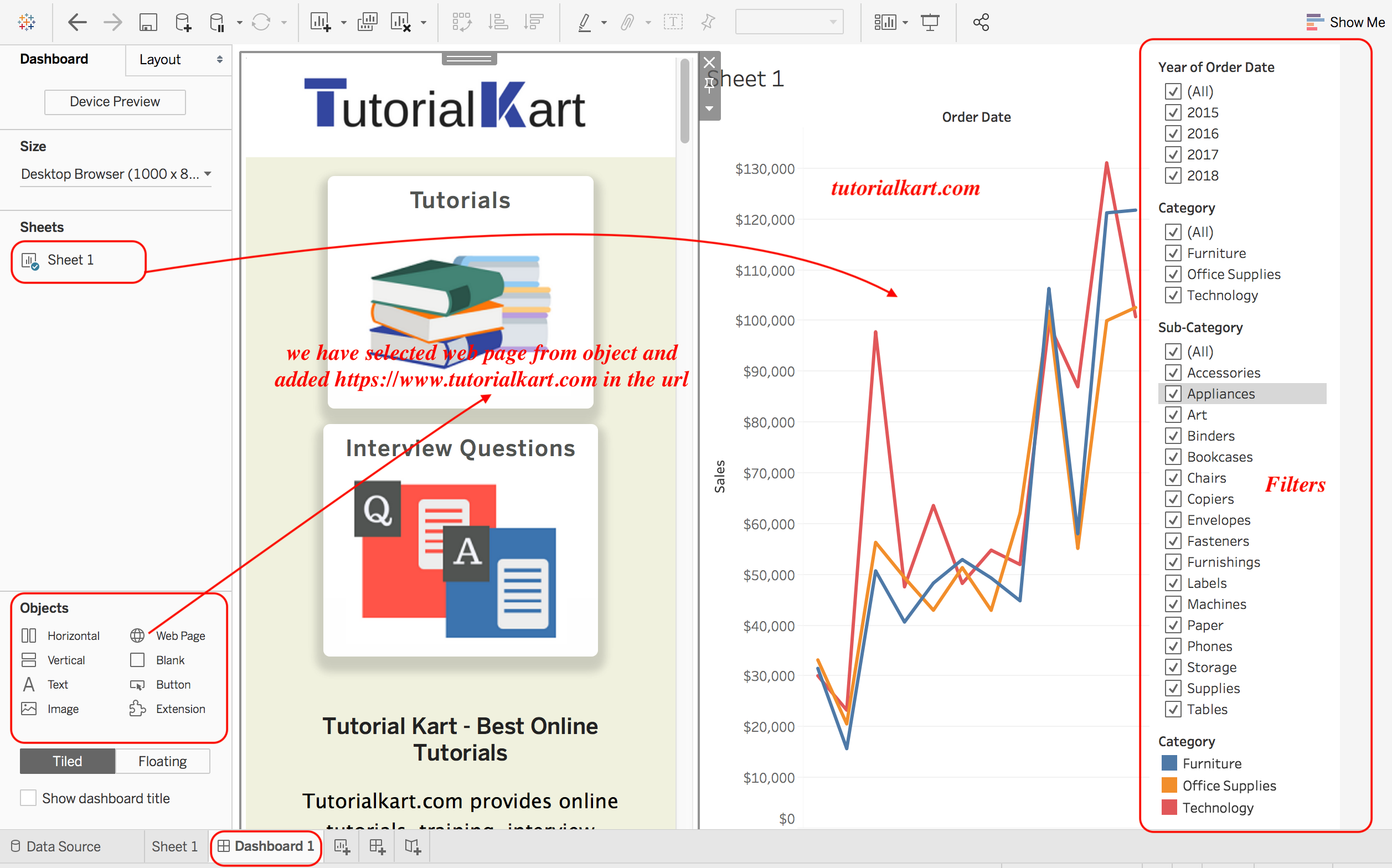Getting started with Tableau
The first thing to do in Tableau is to connect to your data. In Tableau, there are two types of connection, they are connecting to local files and connecting to a server.
Connecting to local file
Tableau can connect to any local file and database like Excel, Text file, Access, Statistical File or any other Database file. Local connection gives the maximum speed of data processing.
Connecting to the Server
Tableau can connect to your data server too. It can connect to almost any type of data server. Below are some of the most popular databases that Tableau can connect:
- Tableau Server.
- Google Analytics.
- Google BigQuery.
- Hortonworks.
- Hadoop Hive.
- MapR Hadoop Hive.
- IBM DB2.
- IBM BigInsights.
- IBM Netezza.
- Microsoft SQL Server
- Microsoft Analysis Services.
- Oracle.
- Oracle Essbase.
- MySQL.
- PostgreSQL.
- SAP
While working on Tableau, data can have Live Connection where any change in the source data will be automatically updated in Tableau. On the other hand, data can be Extracted to Tableau repository so that any change made here will not affect the original source data.
Connecting to Excel File
To connect to an excel file, click “Excel” on the left-hand side. Navigate to the file on your computer and double click to open it. For this Tableau tutorial, I will use a sample file that comes with the installation called “superstore”. You should open the appropriate file that you will be working with.
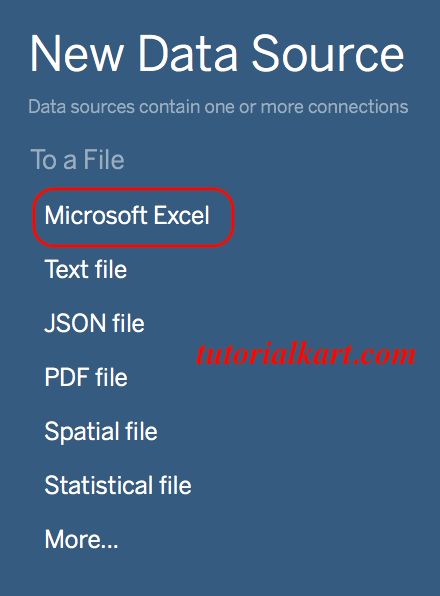
Now, we are in the data connection window. It has the following Dimensions, Measures, Sets, and Parameters as shown below.
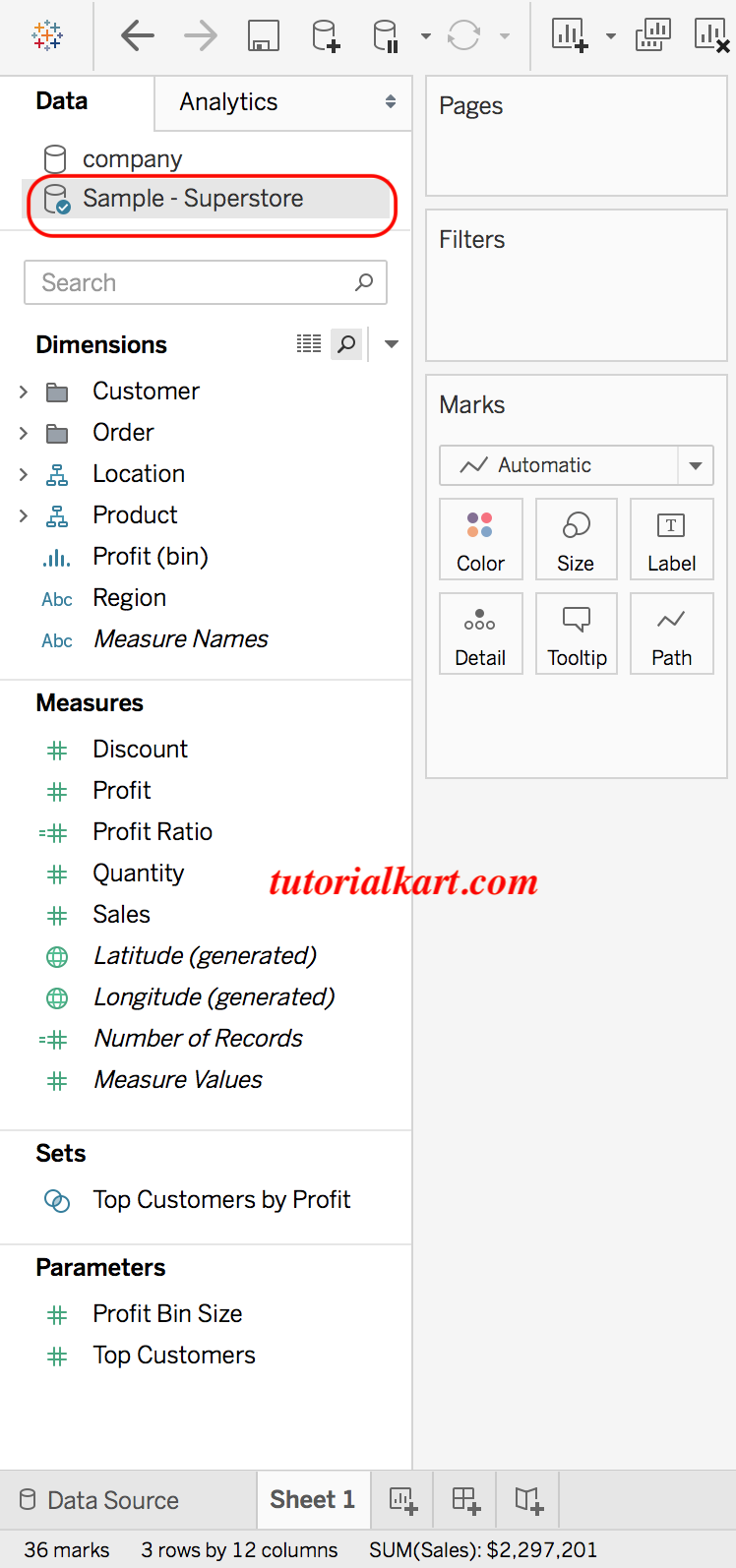
Creating charts in Tableau
Tableau automatically separates the data into Dimensions and Measures. The Dimensions are the categorical fields. These fields will create labels in the chart. Measures are the quantitative fields. These are the numbers we want to analyze. They create columns and rows in the chart. After adding Order Date, Category, and Sales, the chart looks like this:
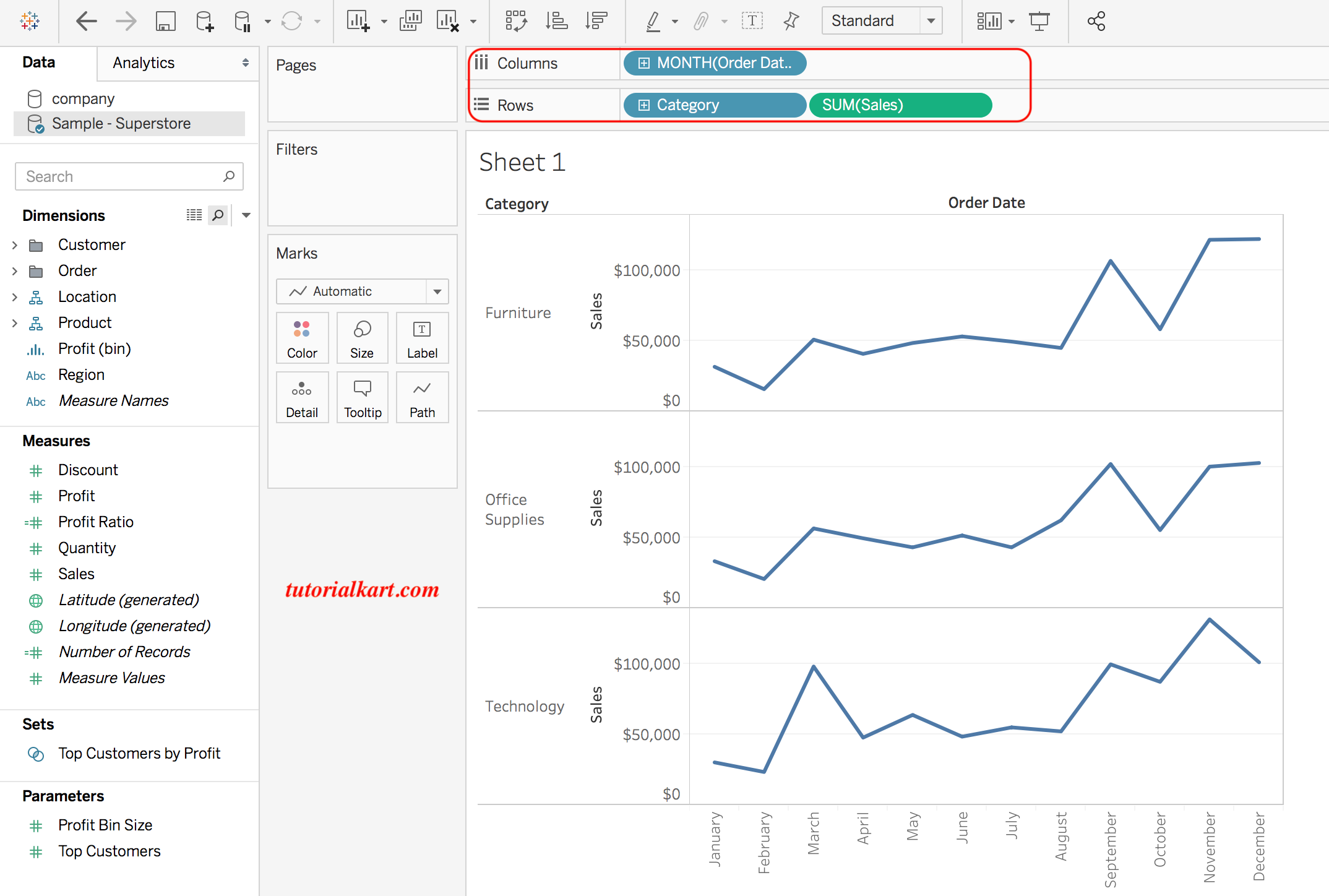
How to select a chart?
Sometimes, it might be confusing what type of chart should be used for specific data. Tableau has an interesting feature called “Show me”. “Show me” is the list of the possible charts that can be created using a different combination of data. Holding down the Ctrl key and clicking any two or more combinations of dimension and measure will highlight the possible chart in Show Me box.
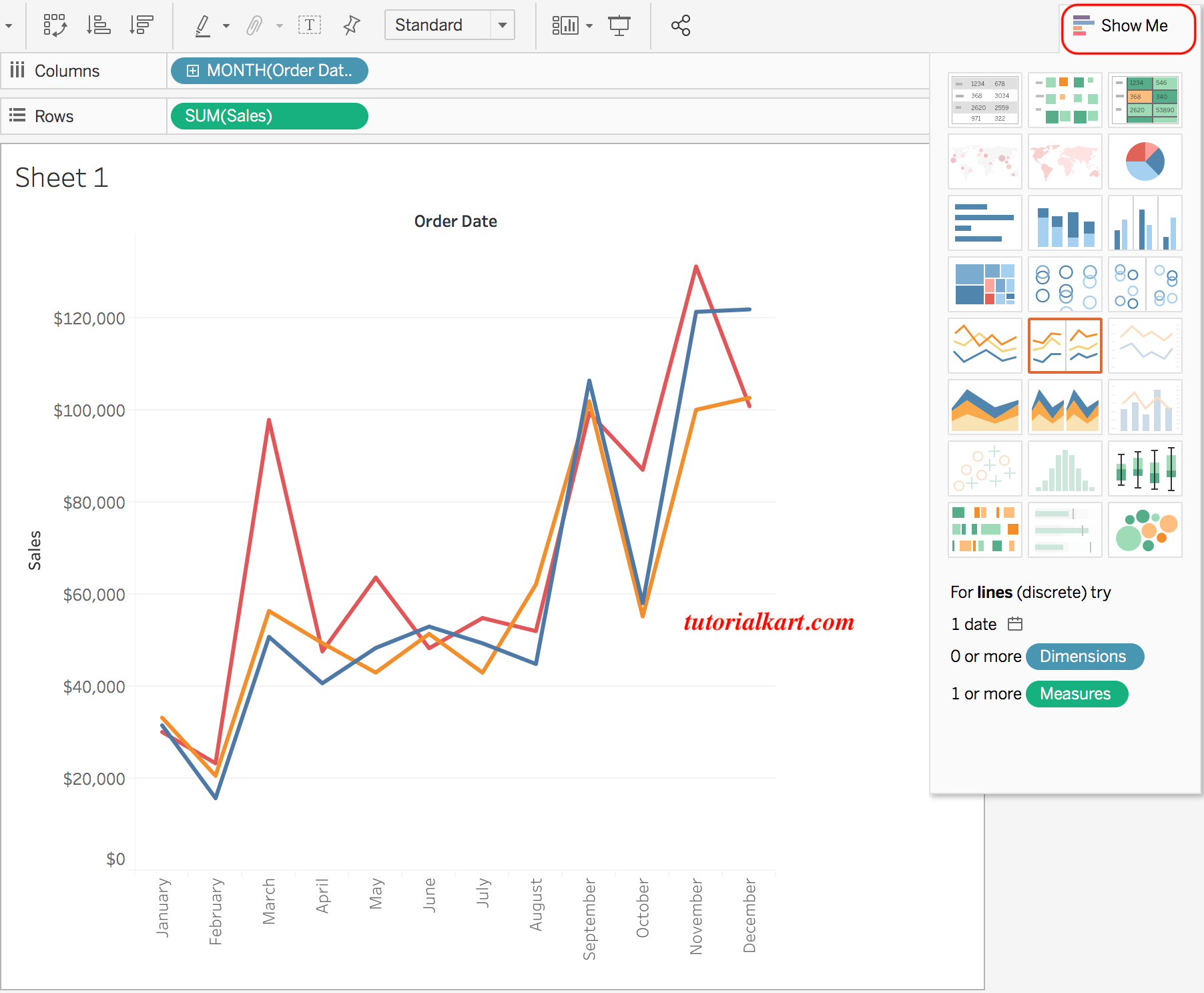
Adding filters to the charts
Adding filters to the charts enable the end user to easily drill down to obtain the desired information. To add a filter, simply right-click on the dimension that will be used to filter and choose “Show quick filter”.
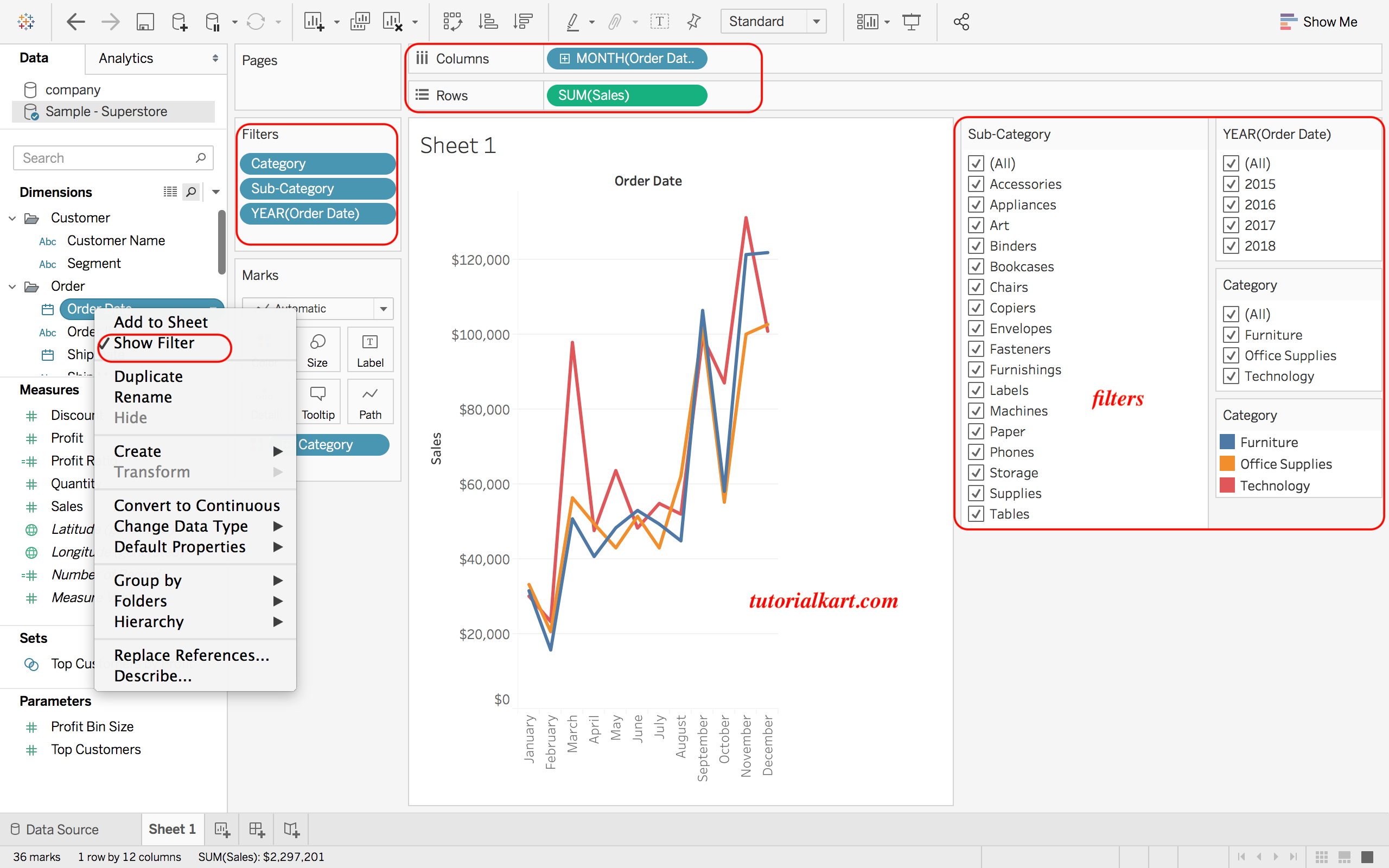
Creating a dashboard
Tableau Dashboard contains all the related features intuitively interconnected to provide interactive and real-time dashboard experience for non-technical users. To create a dashboard, click “New Dashboard” icon at the bottom the page.
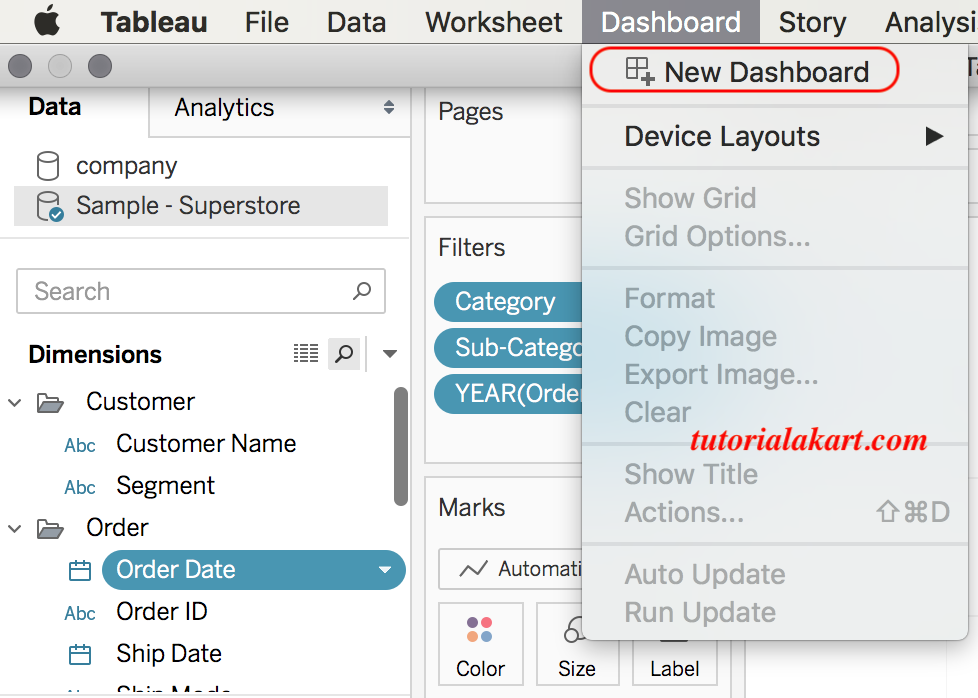
On the top left corner, dashboard pane will display the available sheets. To add that sheet on the dashboard, simply drag and drop them on the empty space to the right as shown below.
